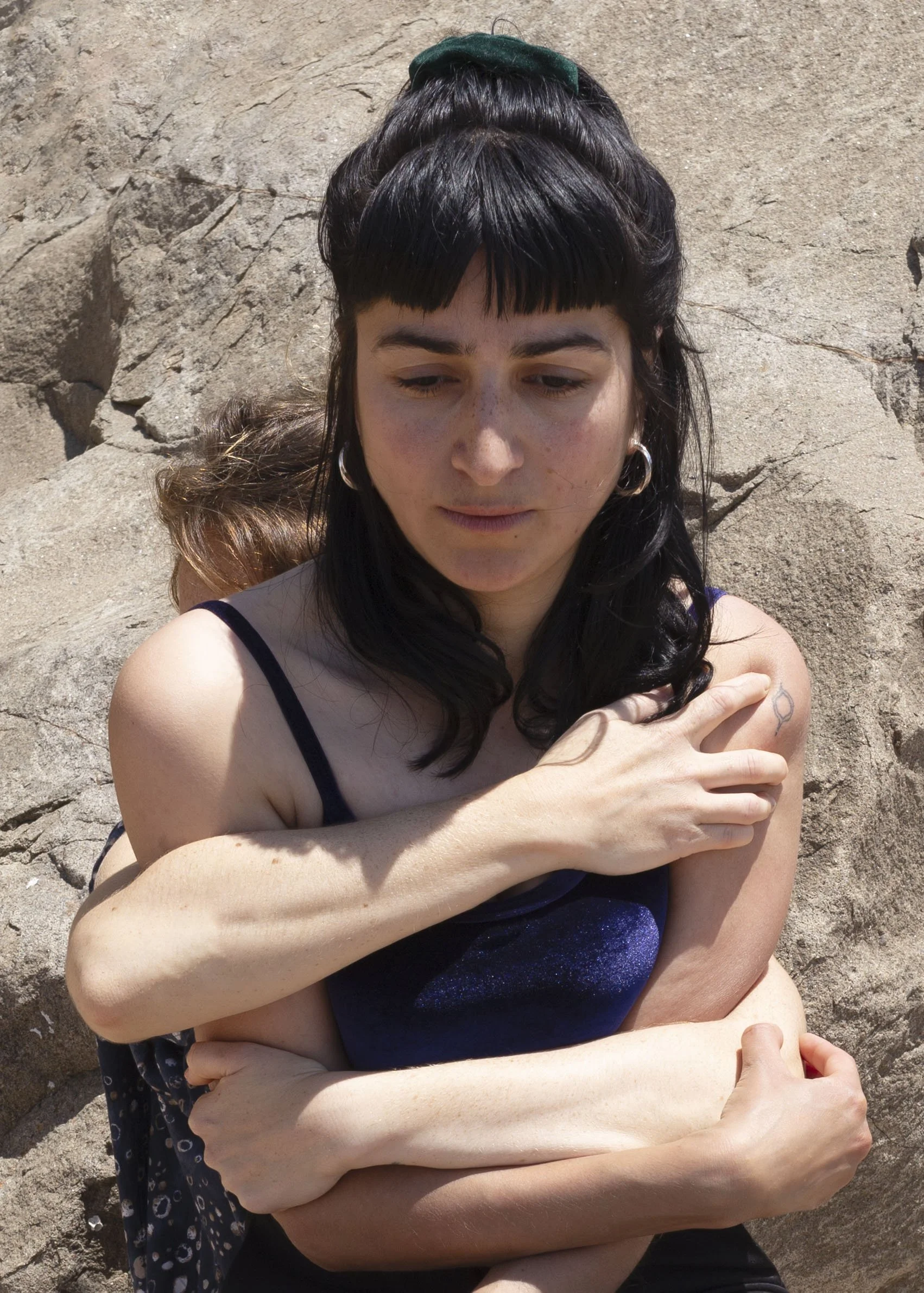2024 (ongoing)
the opposite is connection
(…) It seems as if there is not one Cihan Çakmak. In this way, she addresses the many-sidedness
of every person: the stories that we are given, for example through our family, our experiences,
but also the conflicting associations that are activated in us and that we activate in others.
The two videos also spark associations when viewed. Four figures in red are held by another figure
dressed in blue. They seem to want to escape, to free themselves, but they are being held down.
Or are they being protected, held together by the blue figure? Next to them, three figures are bending
over the water, scooping water out of a river with their bare hands. Have the three figures
experienced the same thing and are trying to scoop away the burden in an infinite hopelessness?
No matter how hard they try, they will not be able to empty the river. Or is it rather an attempt to hold the
river together, so that nothing escapes, nothing seeps away? Does it symbolize the eternal struggle
against the oppression of women? Coping with a trauma? In psychology, the term trauma is used to
describe a psychological wound that does not heal easily. Whether an event becomes a trauma is
very individual and depends on whether you can cope with the experience or not, i.e. on your own
resources, your level of development, the type of trauma and your social network. In her work,
Çakmak addresses not only these individual aspects that play a role, but also the social structures
through which the traumas arise. Most importantly, depending on who we are, the interpretation of her
works will be different. Çakmak's works pose these questions directly through this ambiguity:
What do the viewers see here? But also: What do they not see?
The text roll in turn materializes these psychological processes, what otherwise only takes place in our heads.
A stream of consciousness from her perceptions, sensations and memories lies before us.
In this way, Çakmak manages to address our own perceptions, biases and psychological wounds.
With an immediate, emotional power, she shows us places within ourselves and we begin to
understand the world from the inside out. This creates something that is often missing in traumatization:
through a connection to herself and her own feelings and thoughts, the connection to others grows,
in this case to us, the viewers of her work.
Text by Dr. Maike Salazar Kämpf
Photo: Dirk Rose, courtesy Mouches Volantes
Photo: Dirk Rose, courtesy Mouches Volantes
50m Text-roll on transparent paper














